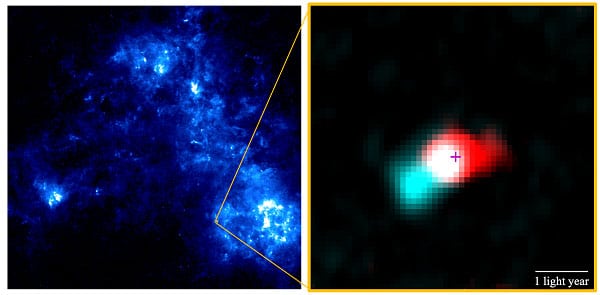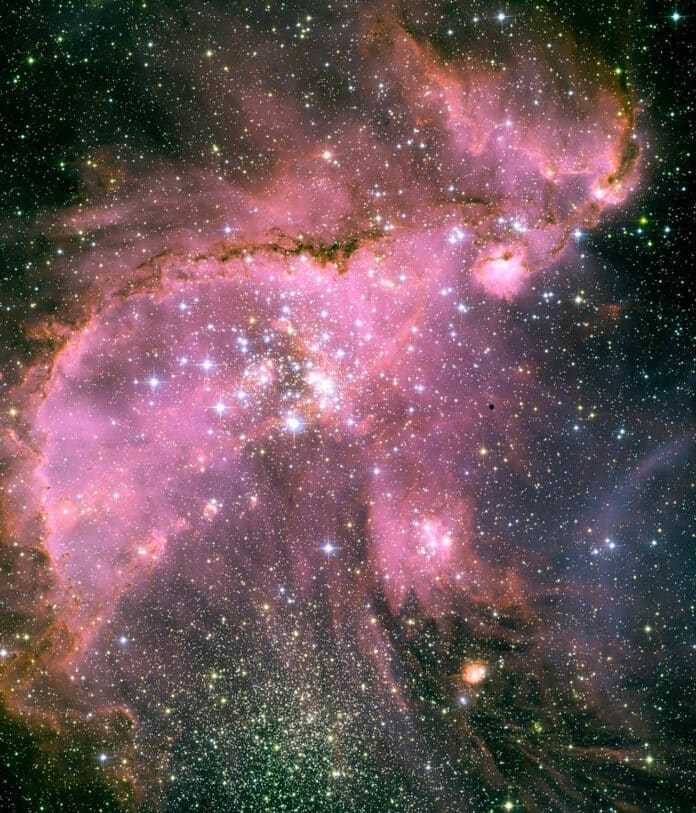The Small Magellanic Cloud is a dwarf galaxy near the Milky Way. It is characterized by a low abundance of elements heavier than helium, similar to the galaxies 10 billion years ago.
Using the Atacama Large Millimeter/submillimeter Array (ALMA), an international team observes the high-mass young stellar objects in the Small Magellanic Cloud. The target provides a detailed observational view thanks to the relatively close distance from the earth.
In a new study, they reported the detection of a bipolar gas stream flowing out of the “baby star” Y246. The molecular flow was found to flow with a velocity of more than 54,000 km/h in both directions.

In the present universe, it is believed that this molecular outflow during gravitational contraction suppresses the rotational motion of developing “baby stars,” speeding the star’s growth. The discovery of the same phenomenon in the Small Magellanic Cloud suggests that this process of star formation has been common throughout the past 10 billion years. The team also expects this discovery to bring new perspectives to studying stars and planet formation.
Journal Reference:
- Kazuki Tokuda, Sarolta Zahorecz et al. The First Detection of a Protostellar CO Outflow in the Small Magellanic Cloud with ALMA. The Astrophysical Journal Letters. DOI: 10.3847/2041-8213/ac81c1
